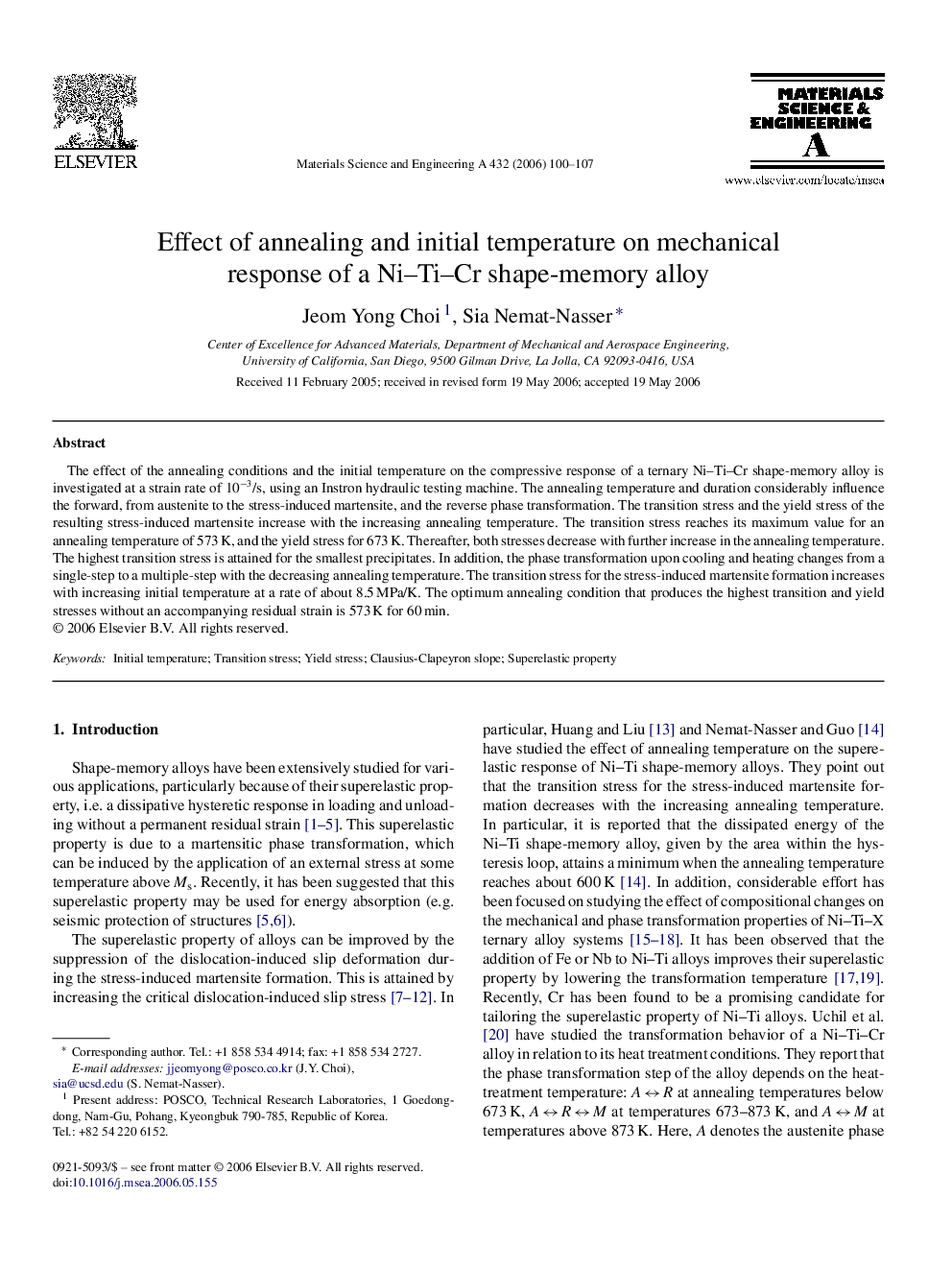| Article ID | Journal | Published Year | Pages | File Type |
|---|---|---|---|---|
| 1585059 | Materials Science and Engineering: A | 2006 | 8 Pages |
The effect of the annealing conditions and the initial temperature on the compressive response of a ternary Ni–Ti–Cr shape-memory alloy is investigated at a strain rate of 10−3/s, using an Instron hydraulic testing machine. The annealing temperature and duration considerably influence the forward, from austenite to the stress-induced martensite, and the reverse phase transformation. The transition stress and the yield stress of the resulting stress-induced martensite increase with the increasing annealing temperature. The transition stress reaches its maximum value for an annealing temperature of 573 K, and the yield stress for 673 K. Thereafter, both stresses decrease with further increase in the annealing temperature. The highest transition stress is attained for the smallest precipitates. In addition, the phase transformation upon cooling and heating changes from a single-step to a multiple-step with the decreasing annealing temperature. The transition stress for the stress-induced martensite formation increases with increasing initial temperature at a rate of about 8.5 MPa/K. The optimum annealing condition that produces the highest transition and yield stresses without an accompanying residual strain is 573 K for 60 min.
